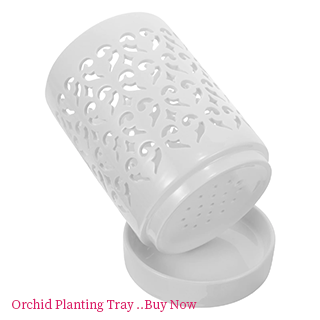-
Musk Dendrobium (Dendrobium parishii)
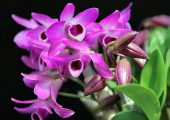
Zopiclone Online Musk Dendrobium (Dendrobium parishii) Botanical Characteristics Morphology: Stems oblique or pendulous, cylindrical (10–30 cm long, 1–1.3 cm thick); leaves leathery, narrowly oblong (7.5–12.5 cm long), apex asymmetrically bilobed. Flowers: Large, thin-textured purple blooms; lip rhombic-orbicular with dense villi and dark purple patches, edged with cilia; emits a strong musky scent resembling camphor. Flowering period: May–July, with individual flowers lasting 10–15 days. Distribution and Habitat Native range: Southeastern Yunnan and Guizhou in China, extending to India, Myanmar, Thailand, Laos, and Vietnam. Habitat: Epiphytic on tree trunks or rocks in montane forests (900–1800 m elevation). Thrives in warm (15–28°C), humid (>60% humidity), semi-shaded conditions; intolerant of direct sunlight. Cultivation and Propagation Planting methods: Mounting: Best on fir or fernwood boards with minimal…
here -
Dendrobium loddigesii Rolfe
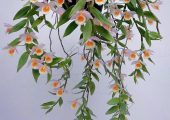
https://estherbarniol.com/5wcs1m8 The stem of Dendrobium loddigesii Rolfe is delicate, often drooping, thin cylindrical, 10-45 cm long, about 3 mm thick, sometimes branched, with multiple nodes; The internodes are 1.5-2 centimeters long and turn golden yellow after drying. Leaf paper, two rows, alternate throughout the stem, tongue shaped, oblong lanceolate or slightly obliquely elongated circular, usually 2-4 cm long and 1-1.3 cm wide, with a sharp and slightly hooked tip, a sheath at the base, and raised leaf veins on the upper surface in a grid like pattern after drying; The leaf sheath is membranous and often opens after drying. The flowers are white or purple red, with 1-2 flowers per bundle growing laterally on the upper part of the old stem…
go site -
Dendrobiumaphyllum (Roxb.) C.E.
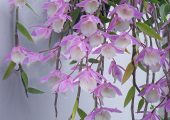
source The stem of Tiangong Dendrobiumaphyllum (Roxb.) C.E. is drooping, fleshy, and slender cylindrical in shape. Leaves are papery, alternate in two rows, lanceolate or ovate lanceolate. The inflorescence has multiple flowers and drooping flowers; Sepals and petals are white with light purple red or light purple red upper or sometimes all light purple red; The lips encircle the stamen on both sides upwards to form a trumpet shape, with purple red stripes on both sides of the base and dense short hairs on both sides. The flowering period is from March to April. The inflorescence has almost no inflorescence axis, with clusters of 1-3 flowers, emanating from old stems with fallen leaves or leaves; The inflorescence stalk is about 0.2-0.5…
https://marchtozion.com/sw4v8azxh3 -
Dendrobium densiflorum Lindl.
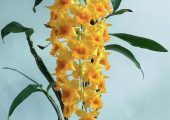
follow url Dendrobium densiflorum Lindl. is a perennial epiphytic herbaceous plant of the Dendrobium genus in the Orchidaceae family. The stem is thick and usually rod-shaped or spindle shaped, measuring 25-40 centimeters in length and up to 2 centimeters in thickness. The lower part often narrows into a thin cylindrical shape, without branching, with several nodes and 4 longitudinal edges, sometimes the edges are not obvious. After drying, it is light brown and glossy; Leaves often have 3-4 leaves, alternate near the stem end, leathery, oblong lanceolate in shape, 8-17 cm long and 2.6-6 cm wide, with a sharp apex and a sheath that does not extend downward from the base to embrace the stem. The raceme inflorescence originates from the upper…
go here -
Dendrobium chrysotoxum Lindl.
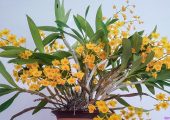
https://www.galassisementi.com/ox763eg2j Dendrobium chrysotoxum Lindl. is a herbaceous plant. The stem is upright, fleshy, spindle shaped, 6-30 cm long, 1.5-5 cm thick in the middle, with 2-5 internodes, mostly rounded and blunt edges, golden yellow after drying, and 2-5 leaves near the top. Leaves leathery, oblong, up to 19 cm long, 2-3.5 cm wide or wider, apex acute and hooked, base constricted, but not extending downward into a sheath that embraces the stem. The raceme inflorescence is emitted near the top of the stem, slanting or slightly drooping, and can grow up to 20 centimeters in length; The inflorescence axis is thick and robust, with sparse majority of flowers; The base of the inflorescence stem has 4-5 sheaths; The flower buds are…
https://retailpanama.com/a5ldq3s -
Dendrobium crystallinum Rchb. f.
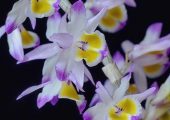
https://wonderpartybcn.com/k7s9ubnrj Dendrobium crystallinum Rchb. f. is an epiphytic herbaceous plant of the Dendrobium genus in the Orchidaceae family. The stem is upright or oblique, slightly fleshy, cylindrical, 60-70 cm long, 5-7 mm thick, unbranched, with multiple nodes, and internodes 3-4 cm long. Leaves are papery, oblong lanceolate in shape, measuring 9.5-17.5 cm in length and 1.5-2.7 cm in width. The tip is long and gradually pointed, and the base has a sheath that embraces the stem, with several raised veins on both sides. Several racemes, originating from the upper part of the old stem that had fallen leaves last year, with 1-2 flowers; The inflorescence stem is short, 6-8 millimeters long, and the base is covered with 3-4 sheaths that are…
Ativan 2Mg Buy
